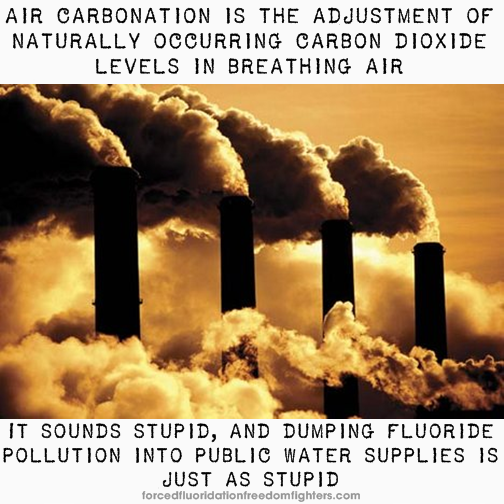6 March 2015 – last modified 2021
Fluoridationists sometimes try to claim that people who are pro-choice on taking fluoride are like climate change deniers. Evidently they don’t understand the difference between actual science and an imagined “scientific consensus”, amongst other things. There is much more which could be said in this regard, but the following is a little comparison I made between climate science and fluorirapist “science” on someone else’s blog in 2013.
1. There is no credible alternative explanation to anthropogenic global warming for the changes in climate which have been observed in recent decades. In contrast, credible alternative explanations for the dramatic declines which have been seen in rates of dental cavities throughout the developed world in recent decades, with or without fluoridation, are better nutrition, better dental hygiene, the use of fluoridated toothpaste (which has fluoride concentrations three orders of magnitude greater than fluoridated water, and a completely different mode of delivery, and shouldn’t be conflated with water fluoridation), and increased consumption of certain antibacterial chemicals in foods.
2. The basic mechanism by which greenhouse gases affect the climate, namely differing response to electromagnetic radiation of different frequencies, is well understood. The means by which fluoridated water is supposed to prevent cavities is still unknown. The latest theory I’ve heard is that it’s supposed to make teeth less sticky.
3. The detailed mathematical modelling of global climate is a credible exercise, whereas the human body is nowhere near well enough understood for detailed mathematical modelling of its biochemistry to be meaningful.
4. The global climate is being continuously monitored in detail, whereas individual fluoride exposure and its relationship to health outcomes has been almost completely ignored.
5. The best available science has been applied to the theory of anthropogenic global warming, but the same cannot be said for fluoridation. Ecologic studies are used to justify fluoridation, instead of randomised controlled trials. There is a lack of blinding, individual fluoride exposure is not measured despite extreme variability, and confounding factors are not properly accounted for. Findings of efficacy have amounted to the false claim that correlation equals causation. Short-term double-blind studies have shown that many people are fluoride sensitive, and suffer symptoms from water fluoridation, but that research is ignored.
6. The number of dental cavities a person has is a subjective measurement, whereas climate science does not rely on subjective measurement.

7. The predictions of climate scientists have been broadly consistent with subsequent observations, and climate scientists haven’t dramatically changed their story. Fluoridationists initially said that fluoride worked systemically, not topically, but now say that the benefit is mainly from direct contact with the teeth. Communities which have discontinued fluoridation have seen a decrease, not increase, in rates of cavities. Rates of dental fluorosis are far higher than the 10% initially predicted. Fluoridation hasn’t come close to curing dental decay, or putting dentists out of business. It was claimed that fluoride is an essential nutrient, but that has since been disproved.
8. The idea of anthropogenic global warming is driven by qualified scientists and opposed by industry, whereas the opposite is true of water fluoridation.
9. Most geologists are not qualified to speak on climate science, and most dentists are not qualified to speak on the harm caused by fluoridation. It doesn’t make any sense to pretend that dentists are experts on toxicology or environmental impacts.
10. You can’t rely on common sense to tell you that continuing to increase atmospheric concentrations of carbon dioxide and other greenhouse gases is a bad idea, whereas anyone with a little common sense can understand that the indiscriminate, uncontrolled, wasteful medicating of populations via public water supplies is ridiculous.
11. It makes sense to apply the precautionary principle in both cases.
